As a medical student and now as a resident, I feel quite comfortable with the day-to-day gross diagnoses in the hospital. In fact, until last week I was convinced that nothing phased me anymore. That was until a patient with myiasis walked into my hospital, and I nearly lost my lunch. The episode has made me think: what is the most disgusting diagnosis in medicine….is there anything more gross than myiasis? Well, after thinking about all the cases I have seen and looking at some gut wrenching images, I have come up with my Top Ten Most Disgusting Medical Conditions.
WARNING: THE IMAGES BELOW REPRESENT REAL MEDICAL PROBLEMS AND ARE EXPLICIT IN NATURE. DO NOT VIEW THESE IMAGES UNLESS YOU ARE PREPARED TO FEEL QUEASY.
1o. Hidradenitis Suppurativa:
A chronic inflammatory condition of the apocrine sweat glands, usually in the axilla (arm pit). It does not matter how many times you cut it out, it will always come back.
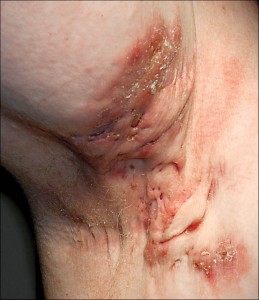
Archives of Dermatology
9. Fecaluria:
The passage of fecal matter through the urethra. The condition usually develops via a vesicointestinal fistula, or a connection between the bladder and the intestine.
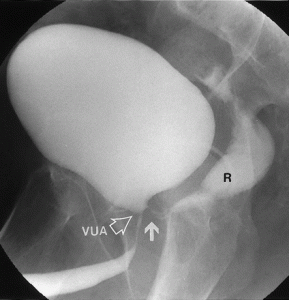
Journal of RadioGraphics
8. Fecal Vomiting:
This can occur in very sick patients, usually due to a bowel obstruction or a gastrocolic fistula (connection between the stomach and the colon). No one wants to see a real picture of this…

7. Fulminant Human Papilloma Virus (HPV) Infection:
HPV causes most warts on our body, including the sexually transmitted forms. However, there is a rare genetic disese called Epidermodysplasia verruciformis which allows HPV to take over a person’s body. You may have heard of Dede Koswara, or “The Tree Man”, who suffered from this disorder, check out his story on ABCNews.

Note: I believe this disease is the same, or related to Keratosis Palmoplantaris…see image below
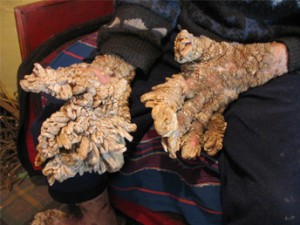
6. Cancrum Oris:
Also known as “Noma Disease”, this is a gangrenous infection that leads to destruction of the mouth and face. The disease is common in African youth.

5. Tapeworm (Cestoda):
Parasitic flatworms are not as uncommon as you might think. They live in your small intestine for years at a time, laying eggs and feasting off host blood and feces. One worm can go from egg to 15 foot long adult in only a few months. They can be contracted from eating under cooked meats, especially pork. One species, Taenia saginata, which infects cows and humans, has been found to grow up to 40 feet long.
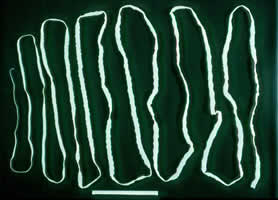
cdc.gov
4. Echinococcosis:
Also known as hydatid disease, this is another parasitic tapeworm infection, which an twist. When the Echinococcis granulosus worm infects a host, it creates an other-worldly cyst in the body. The cyst continues to expand until it is either removed, or overcomes the host. More disturbing is that the echinococcosis loves to make its home in the host brain. The image below shows the removal of a hydatid cyst from the abdomen. This movie depicts removal of a cyst from the brain and is a very graphic, real-life example of how large the cysts in the brain get, and how they are removed.
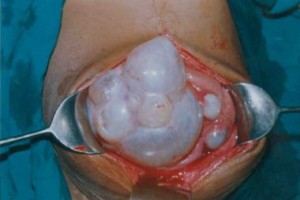
3. Bed Bug Infestation:
Why is the Cimicidae parasite so high on the list? If you are asking that question, you have never seen a real infestation. While I was a fourth year medical student I was riding with an EMS team when we picked up a homeless man to bring to the hospital. While enroute to the ED we noticed hundreds of red sores. When asked about the wounds, the man did not know anything about them. Two minutes into the drive I saw movement around the man’s waistline. All of the sudden, 25-30 bed bugs crawled out of his pants and started doing their business on his belly and legs. The man felt nothing. I grabbed one bug with a towel to verify the infestation. Instantly, all 30 bugs rushed right back into the mans pants. If you don’t think a full on Cimicidae infection is gross….just wait until you see one. You will itch for a month.
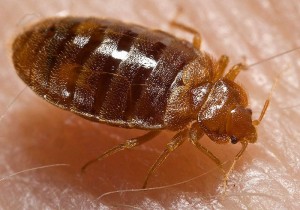
wikipedia.org
2. Ascariasis:
The great white parasitic roundworm. Though not as common nor as long as her tapeworm counterpart, Ascariasis are far more cruel. Contracted from eating ascariasis fecal matter, the larvae hatch in your gut, they dig through your intestines, eat through your lungs, move into your respiratory tract, and get reswallowed into your gut where they grow very large and very numerous. The worms can grow up to 1 foot in length, measuring inches in circumference, and there may be hundreds in one intestine. The image below is an intestine that has been opened up after surgery.
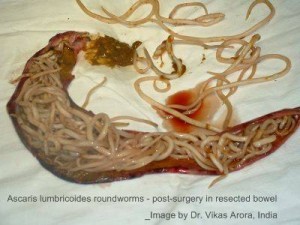
The most disgusting medical diagnosis…
1. Myiasis:
Maggots eating your flesh…and you don’t even know it! How do flies get in your body to lay eggs in the first place? How do people not realize there are hundreds of maggots eating their dying skin? How does it all happen? I don’t know, but the simple thought of the whole cycle makes me feel queasy. One interesting fact is that the use of maggot therapy is on the rise. Some physicians are beginning to adopt a century old practice of cleaning necrotic wounds with maggots…interesting. If you are really brave, check out the video published in BMC Surgery of a surgeon removing multiple maggots from a woman chest.
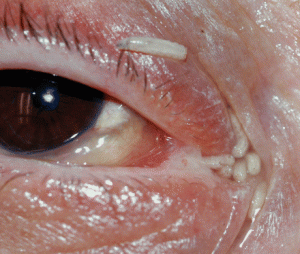
Canadian Medical Association Journal
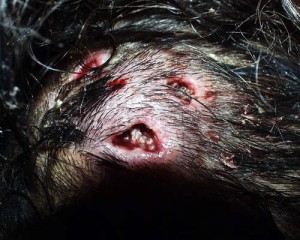
Dermatology Online Journal
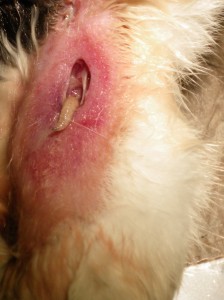
Myiasis in a cat
Honorable Mention:
Hypertrichosis:
“Werewolf Disease” is a genetic syndrome resulting in hear growth on every inch of your body.

Dracunculiasis:
Or “Guinea Worm Disease” results from long skinny roundworms that live in blisters in the legs and feet.

Filariasis:
Another roundworm disease, this one causes blockage of your lymphatic vessels leading to elephantiasis.
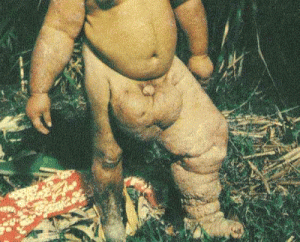









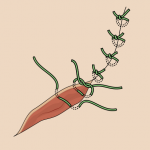



















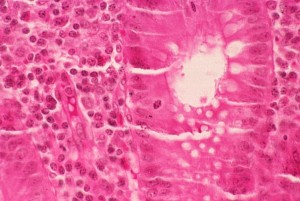
 My name is Andrew and I am a first year resident training to be an ophthalmologist. I created ShortWhiteCoats to provide medical students, residents, and the public with all the information I spent so many hours looking for during medical school.
My name is Andrew and I am a first year resident training to be an ophthalmologist. I created ShortWhiteCoats to provide medical students, residents, and the public with all the information I spent so many hours looking for during medical school.







